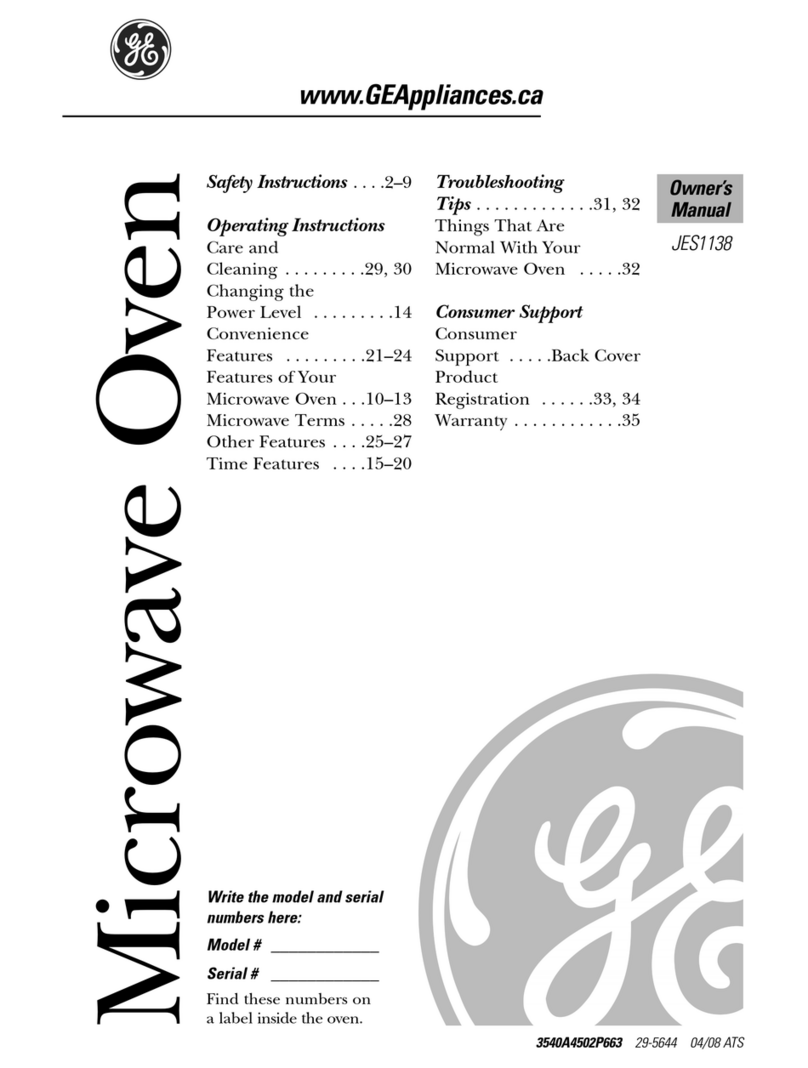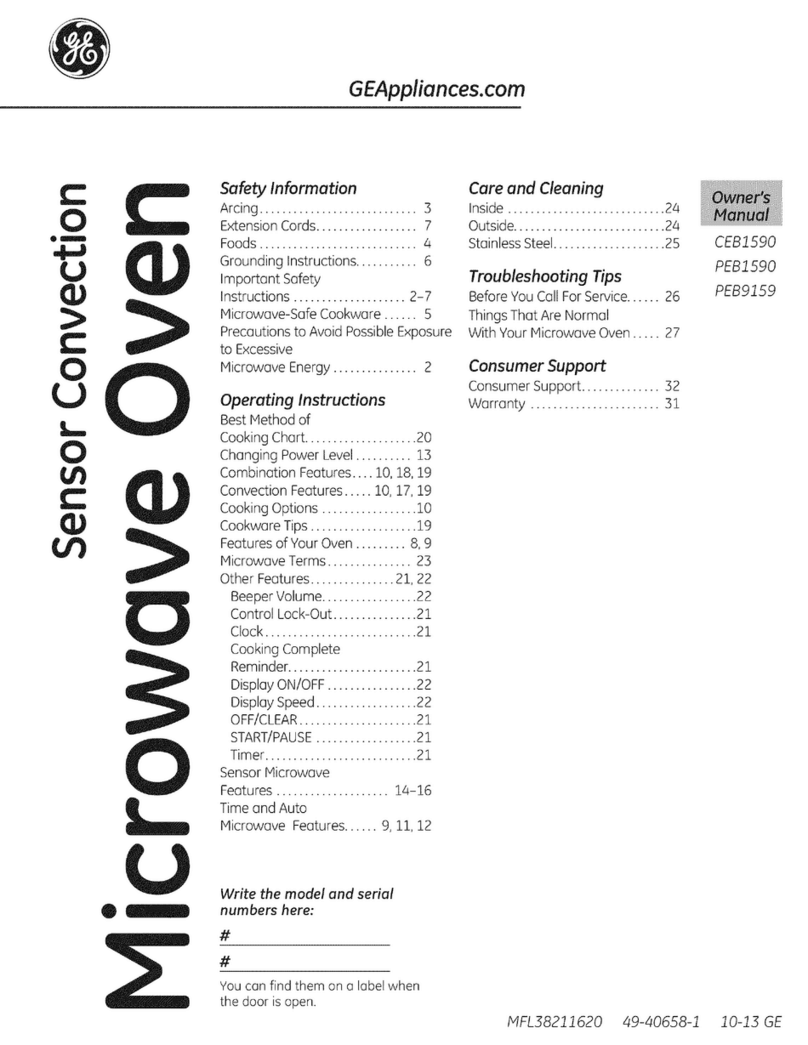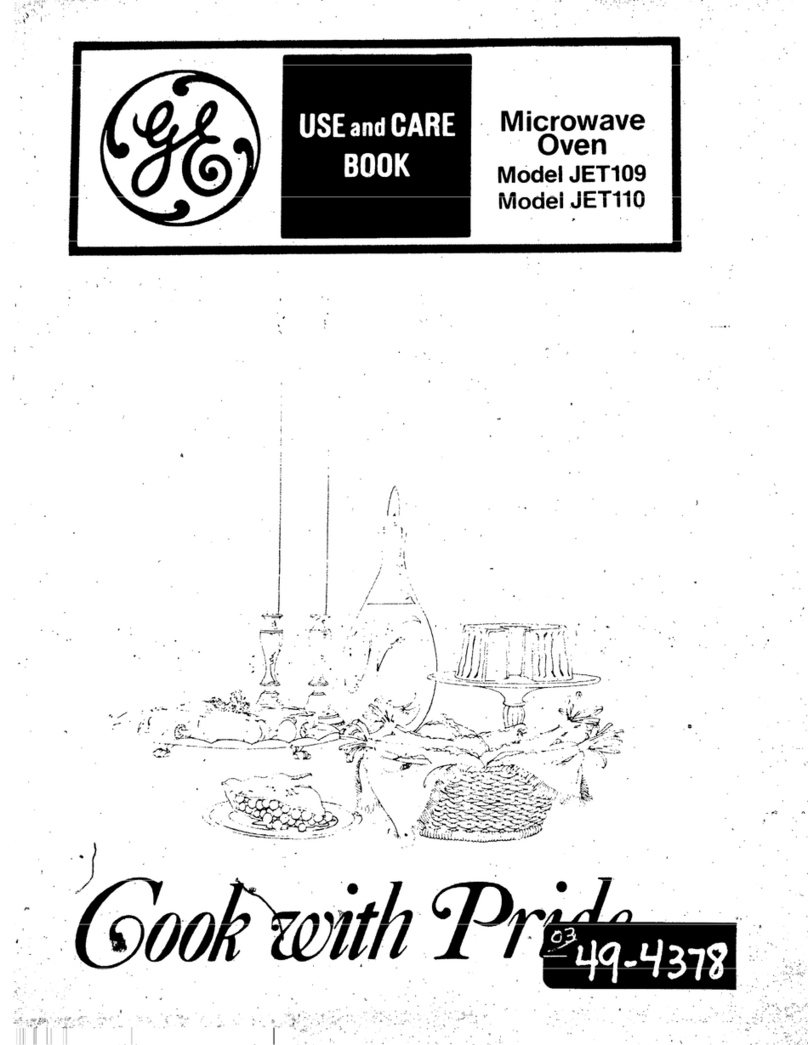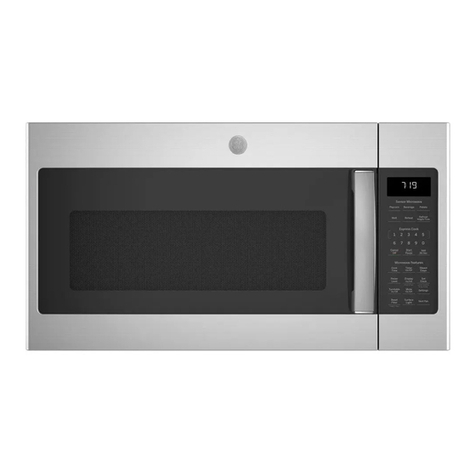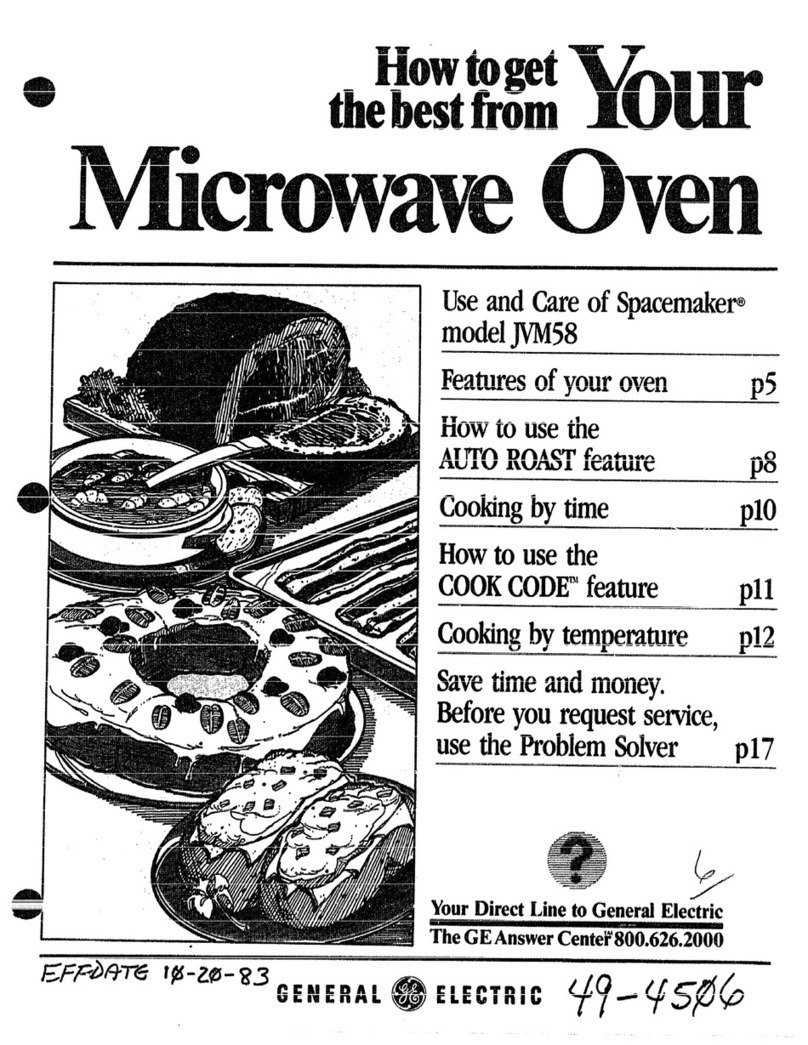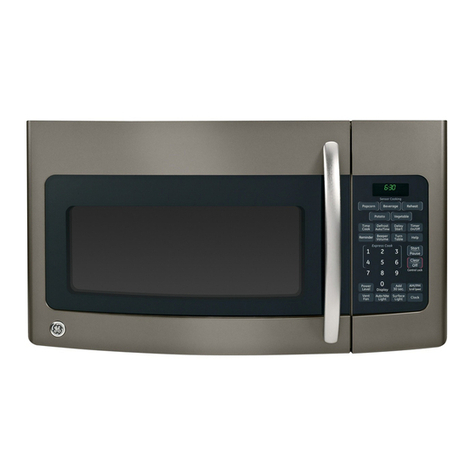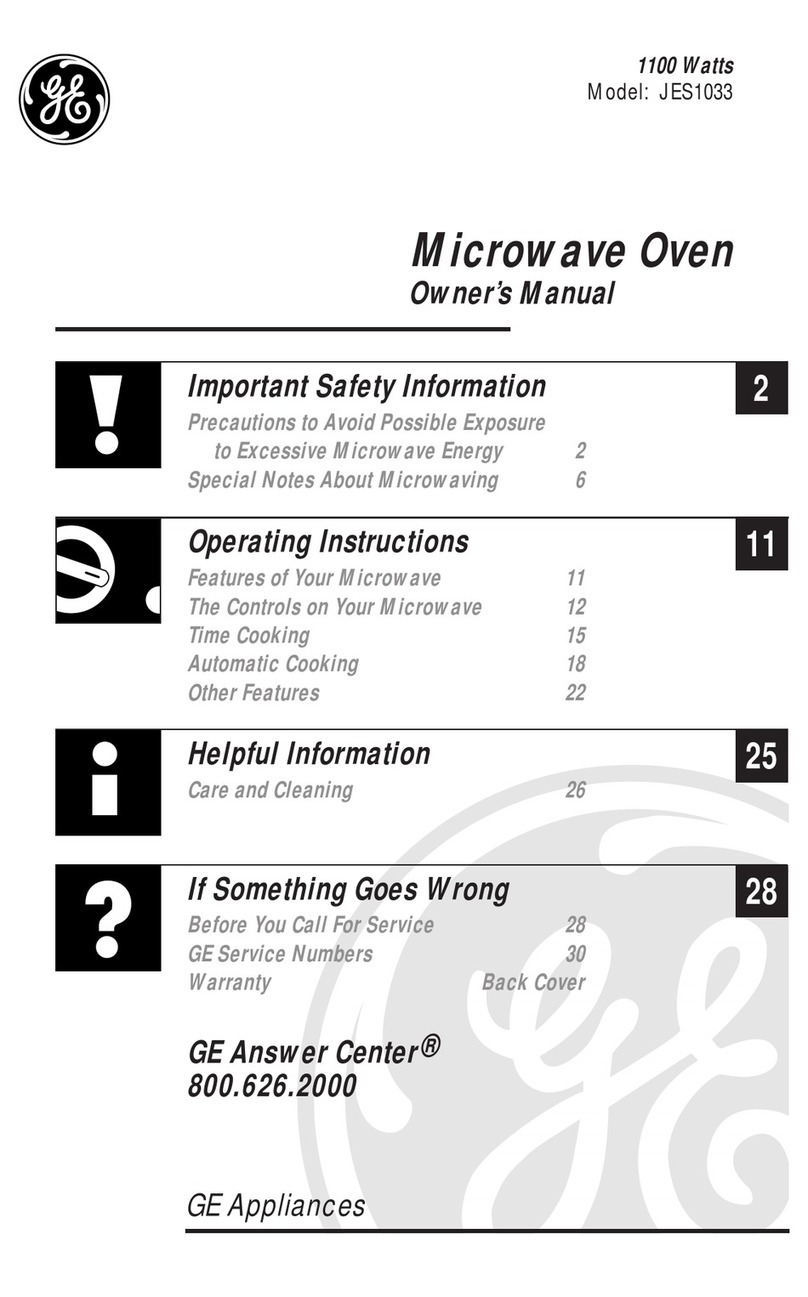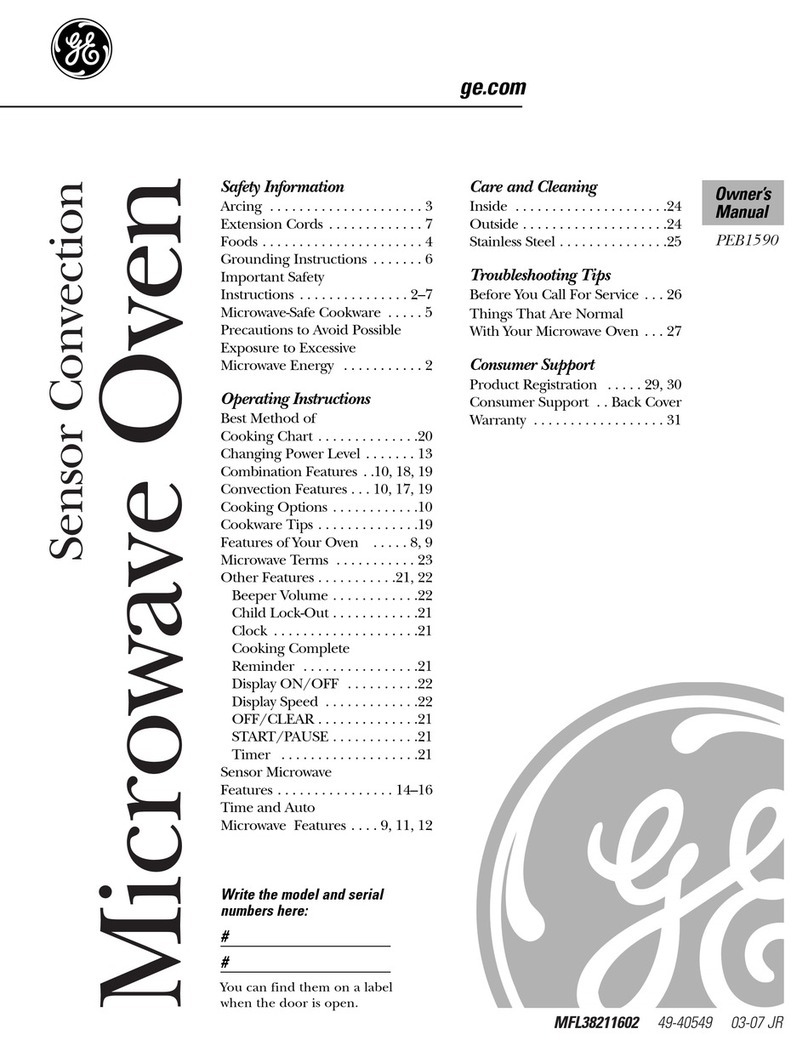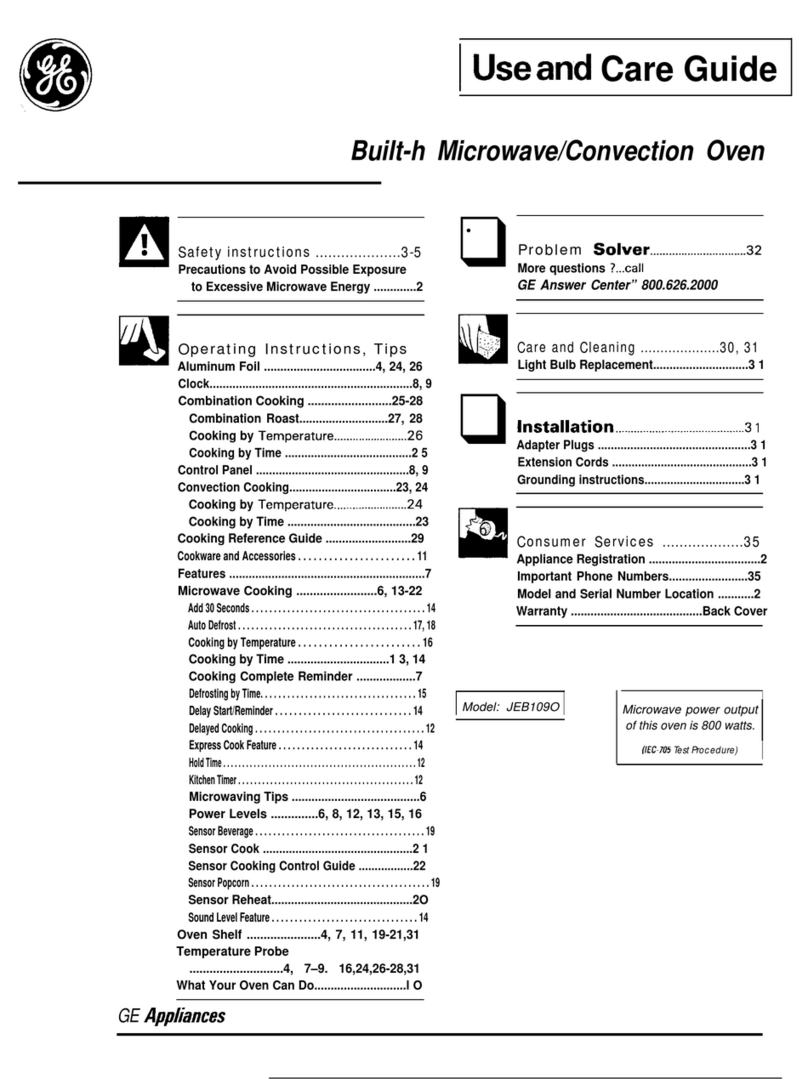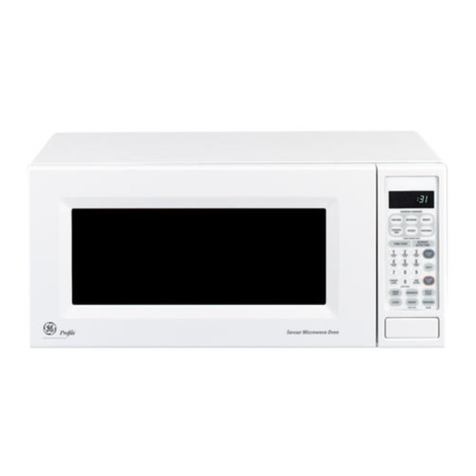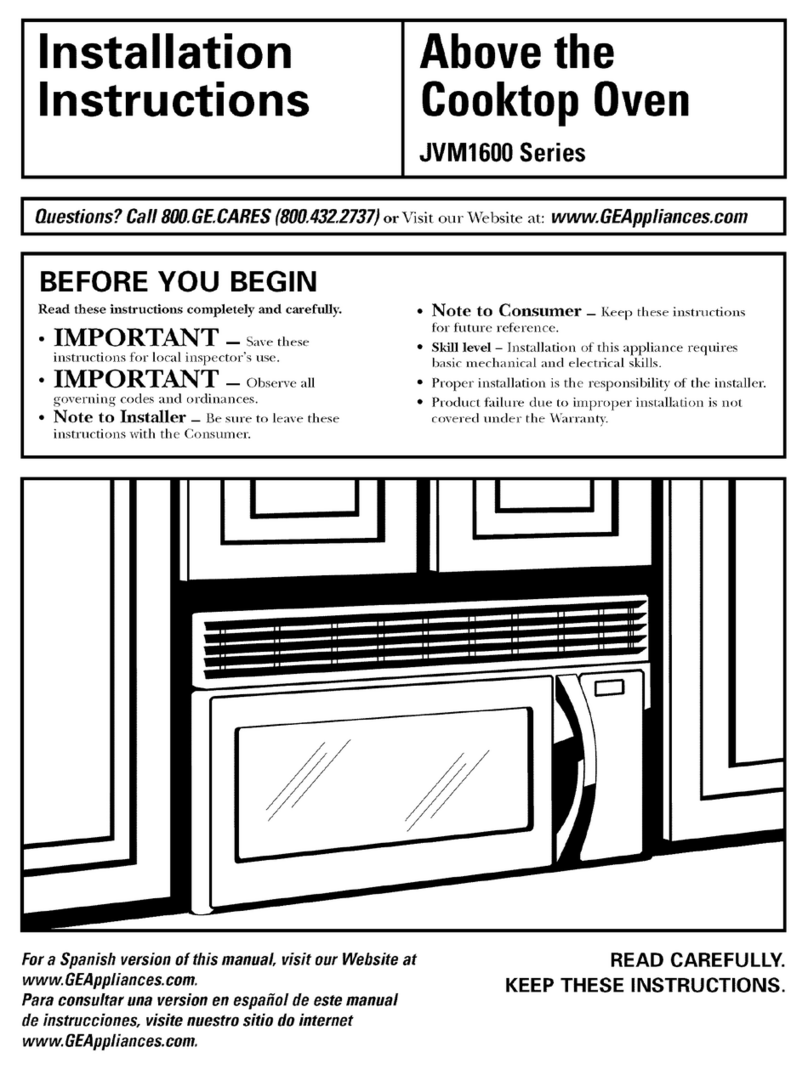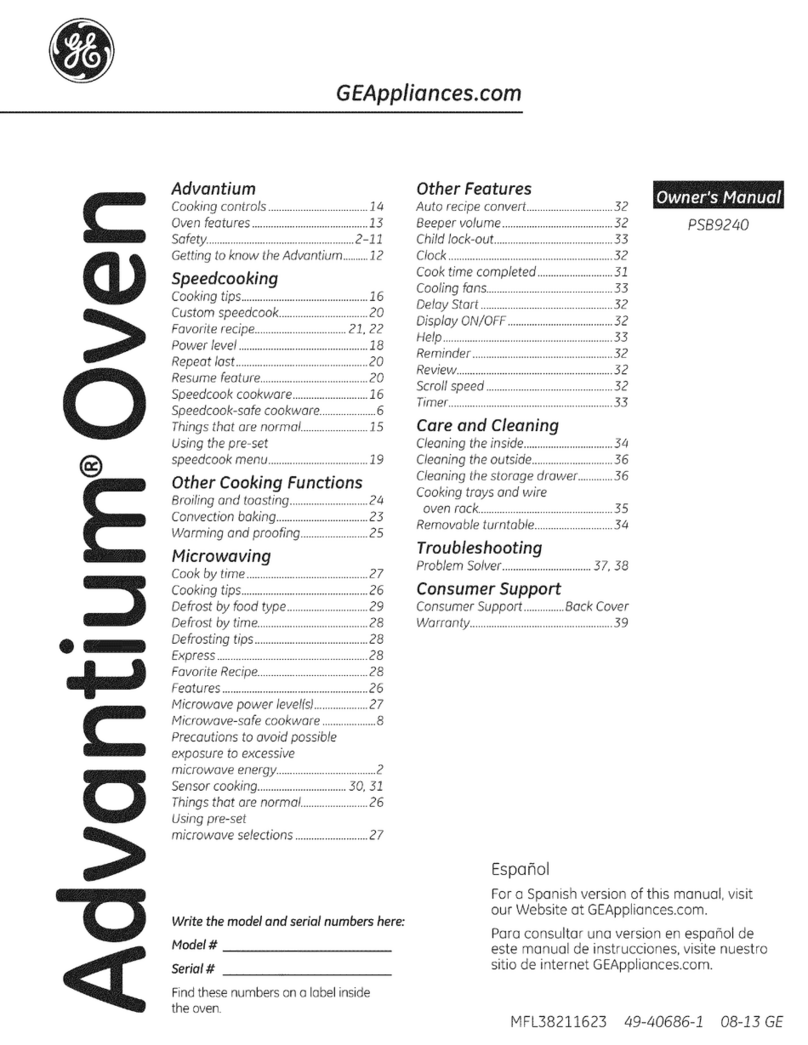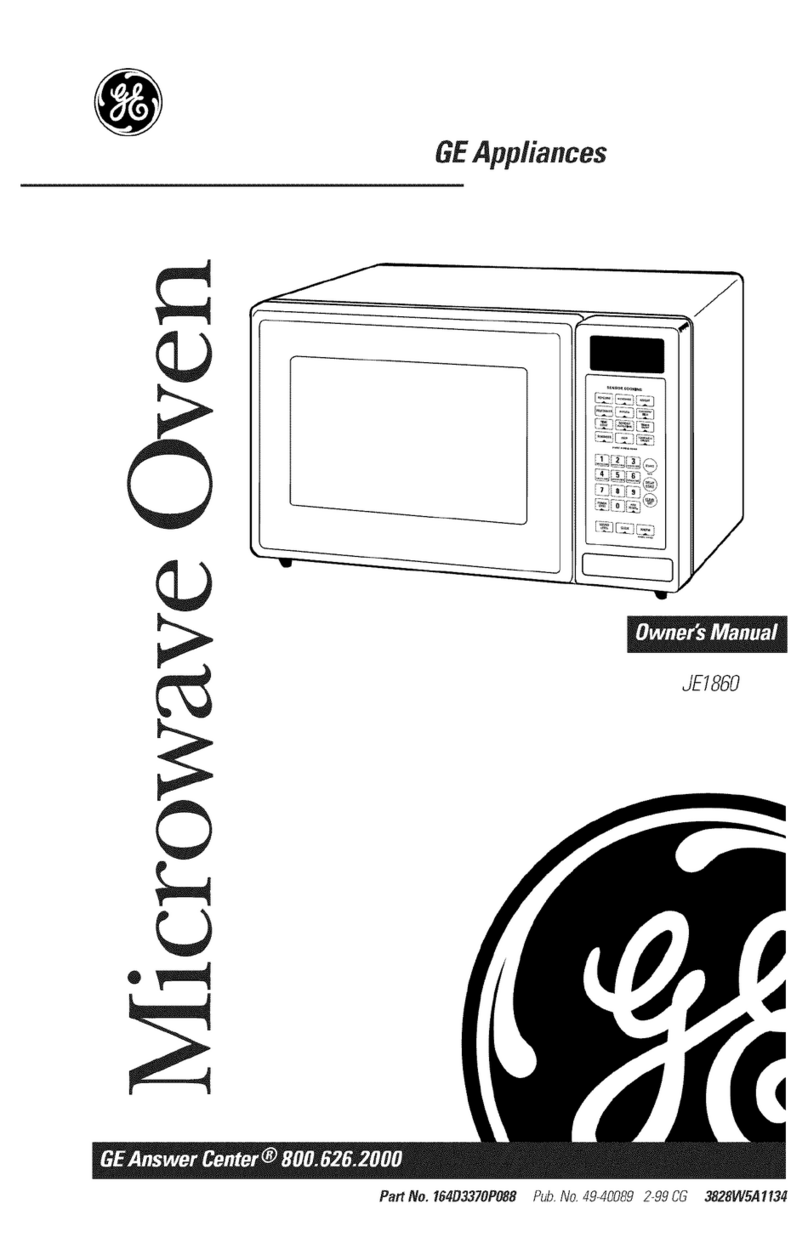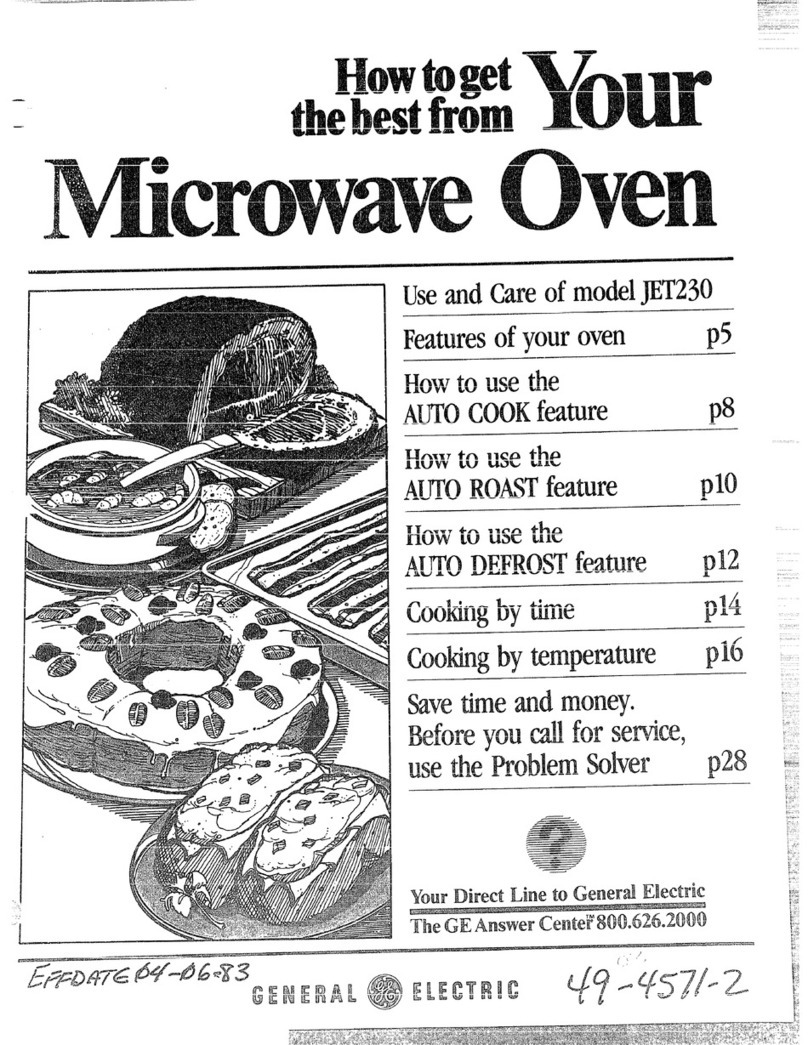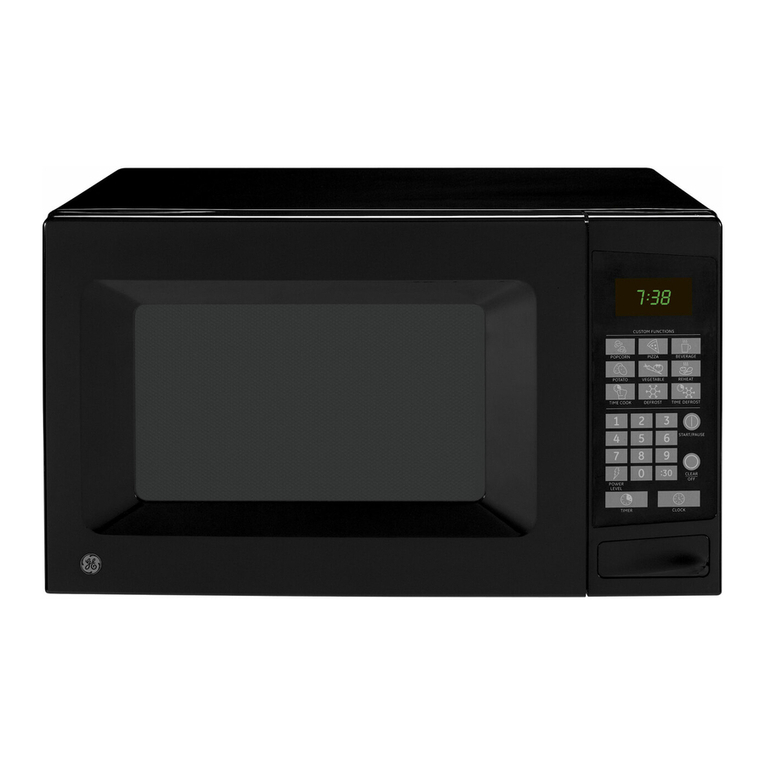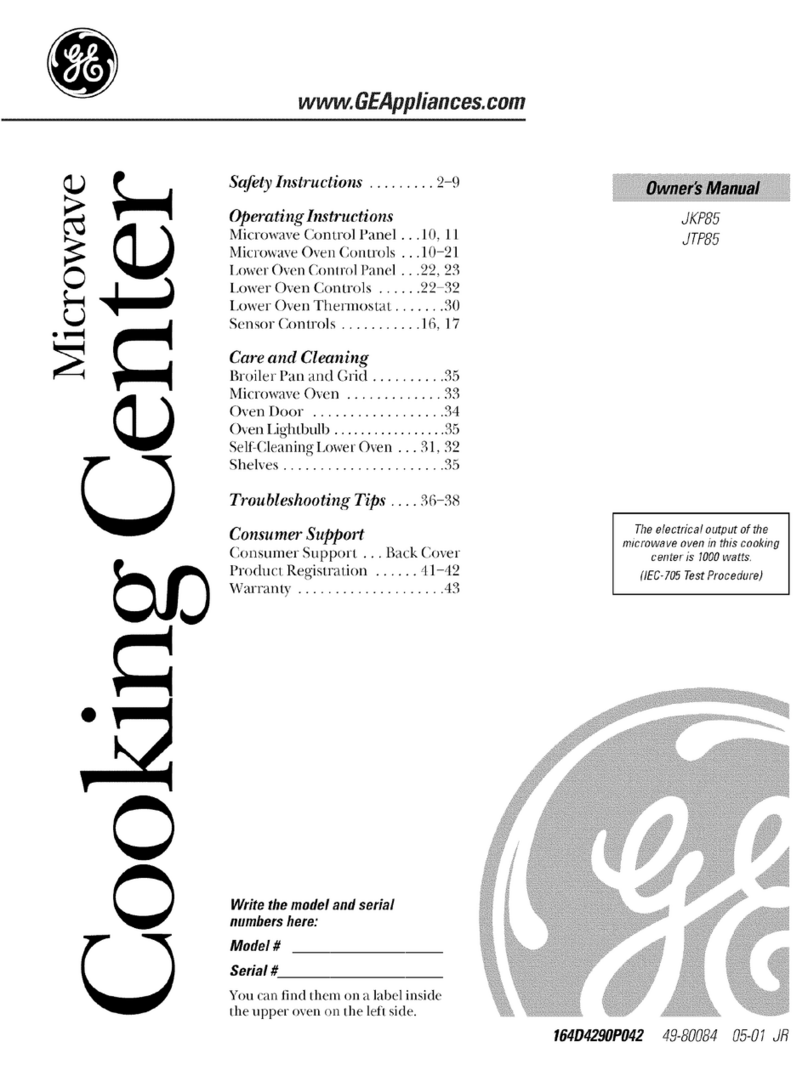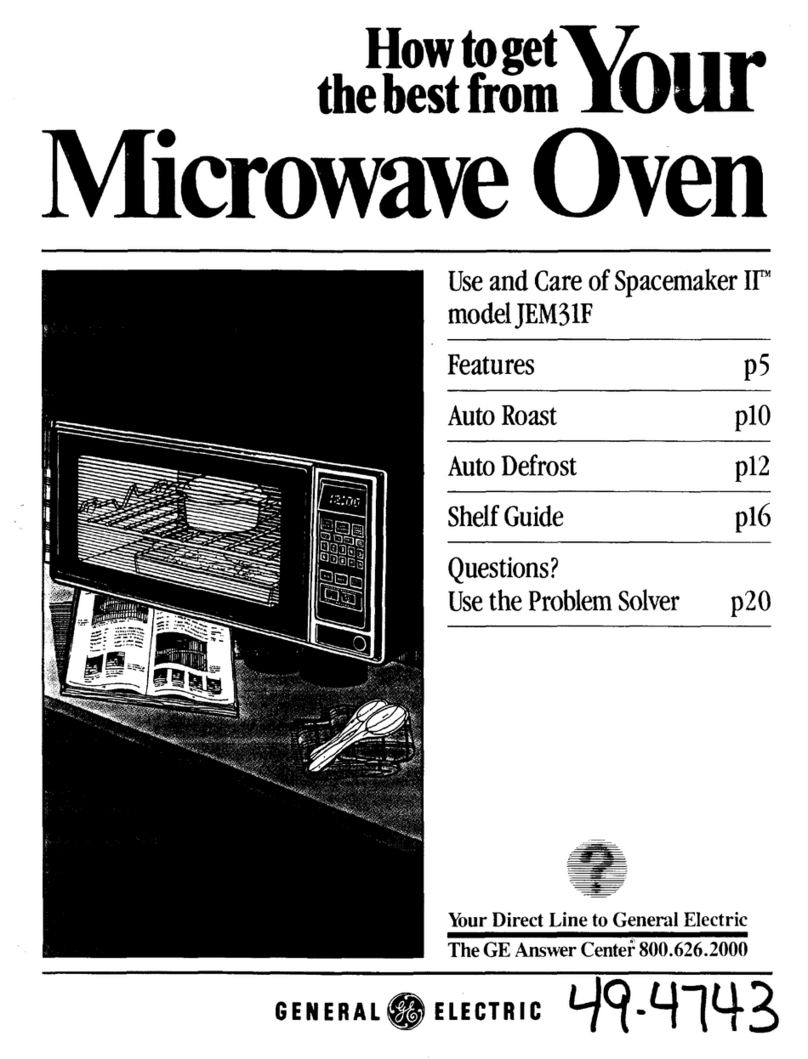Safety Tips
—
1. For personal safety the oven must be properly
grounded. See grounding instructions on page 3of
this book. For best operation, plug this appliance
into its own electrical outlet, to prevent flickering of
lights, blowing of fuse or tripping of circuit breaker.
2. Use of extension cords. Because of potential
safety hazards under certain conditions we strongly
recommend against the use of an extension cord.
However, if you still elect to use an extension cord,
~t is absol filfiecesSarythat- it-be-a-UL listed 3-wire
grounding type appliance extension cord and that
the current carrying rating of the cord in amperes
be 15 amperes or greater. Such extension cords are
obtainable through General Electric service. If you
do use an extension cord with your microwave
oven, the interior light may flicker and the blower
sound may vary when oven-is in use.
3. Be certain to place the front surface of the door
three inches or more back from the countertop
edge to avoid accidental tipping of the appliance in
normal usage.
4. Use metal only as directed in cookbook. Metal
strips as used on meat roasts are helpful in cooking
food when used as directed. Metal trays may be
used for TV dinners. However, when using metal in
the microwave oven, keep metal at least l-inch
away from sides of microwave oven.
5. Do not operate the oven while empty to avoid
damage to the oven and the danger of fire. If by ac-
cident the oven should run empty aminute or two,
no harm is done. However, try to avoid operating
the oven empty at all times–it saves energy and
prolongs life of the oven.
6. Cooking utensils may become hot because of
heat transferred from the heated food. This is espe-
cially true if plastic wrap has been covering the top
and handles of the utensil. Pot holders may be
needed to handle the utensil.
7. Sometimes, the oven floor can become too hot
to touch. Be careful touching the floor during and
after cooking.
8. Do not use any thermometer in food you are
microwaving unless that thermometer is designed
or recommended for use in the microwave oven.
9. Remove the temperature probe from the oven
when not using it to cook with. If you leave the
probe inside the oven without inserting it in food or
liquid, and turn on microwave energy, it can create
electrical arcing in the oven, and damage oven
walls.
10. Remove wire twist-ties on paper and plastic
bags before placing in oven. Twist-ties sometimes
cause bag to heat, and may cause fire.
11.Don’t defrost frozen beverages in narrow necked
bottles especially carbonated ones. Even if the con-
tainer is opened, pressure can build up. This can
cause the container to burst, resulting in injury.
12. Don’t overaook. Excessive overcooking dehy-
drates potatoes, and may cause them to cdtch fire
13. If food should ever ignite: Keep the oven door
closed. Turn off the power immediately: Touch
CLEAR/OFF or disconnect power cord or shut off
power at the fuse circuit breaker panel.
14. Boiling eggs (in and out of shell) is not recom-
mended for microwave cooking. Pressure can build
up inside egg yolk and may cause it to burst, result-
ing in injury.
15: _Foods with unbroken outer “skin” such as po-
tatoes, hot dogs or sausages, tomatoes, apples,
chicken livers and other giblets, and eggs (see
above) should be pierced to allow steam to escape
during cooking.
16.’’Boilable” cooking pouches and tightly closed
plastic bags should be slit, pricked or vented as di-
rected in Cookbook. If they are not, plastic could
burst during or immediately after cooking, possibly
resulting in injury. Also, plastic storage containers
should be at least partially uncovered because they
form atight seal. When cooking with containers
tightly covered with plastic wrap, remove covering
carefully and direct steam away from hands and
face.
17. Do not pop popcorn in yout microwave oven
unless in aspecial microwave popcorn accessory
or unless you use popcorn labeled for use in micro-
wave ovens. Because of the heat generated without
these precautions, the container could catch fire.
18. Plastic Utensils–Plastic utensils designed for
microwave cooking are very useful, but should be
used carefully. Even microwave plastic may not be
as tolerant of overcooking conditions as are glass
or ceramic materials and may soften or char if sub-
jected to short periods of overcooking. In longer ex-
posures to overcooking, the food and utensils
could ignite. For these reasons: 1) Use microwave
plastics only “and use them” in strict compliance
with the utensil manufacturer’s recommendations.
2) Do not subject empty utensils to microwaving. 3)
Do not permit children to use plastic utensils with-
out complete supervision.
19. Do not use your microwave oven to dry news-
papers. If overheated, they can catch fire.
20. When cooking pork either conventionally or in
the microwave oven, follow our directions exactly
and always cook the meat to at least 170°. This
assures that, in the remote possibility that trichina
may be present in the meat, it will be killed and
meat will be safe to eat.
21. Avoid heating baby food in glass jars even
without their lids especially meat and egg mixtures.
causing damage.
4
